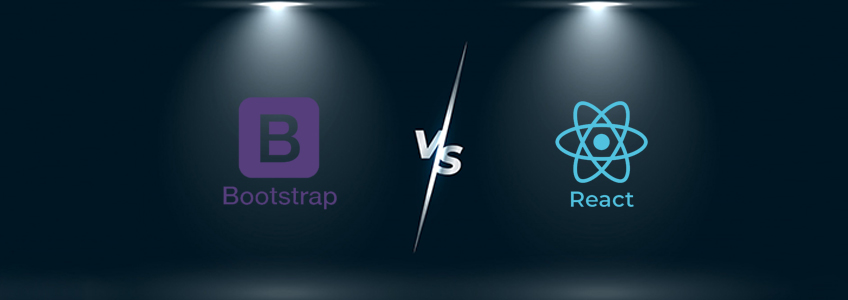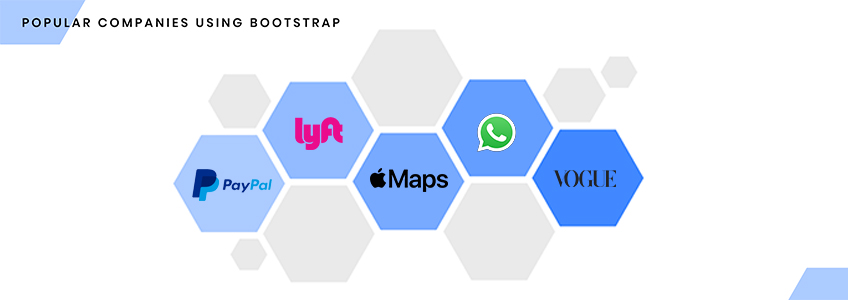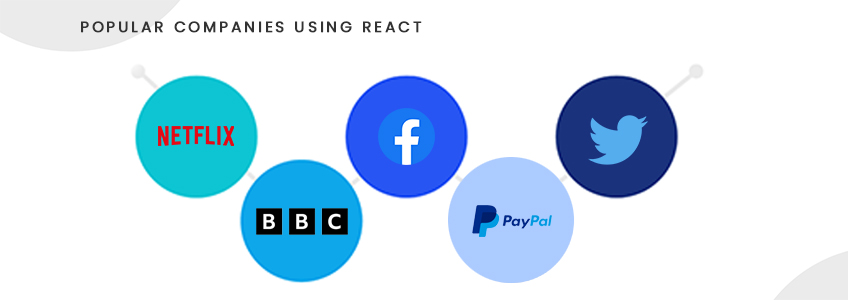
Right now, user experience is king in the digital world. If your software or application can’t smoothly drive traffic and conversions, you fall behind the competition. The overall design and feel of your web platform determine the future of your product. Choosing the correct framework gets even more difficult when front-end development is taken into account because it is the primary driver of customer and brand loyalty.
The discussion between Bootstrap and React 2022 has been ongoing for a while. Here is a blog post with a side-by-side comparison of the two front-end technologies, together with all the criteria and comparisons, in case you are confused about which one to choose for your upcoming project. This thorough comparison of Bootstrap vs. React 2022 includes 10 key factors that can help you in choosing the best framework for your upcoming app development. Keep being impressed by the unexpected pairing of Bootstrap React.
Is the choice between Bootstrap and React subjective?
For years, Bootstrap and React have been helping product owners in achieving this goal. Since they are both front-end powerhouses, there is also an active discussion over which is better than the other. Let’s analyze these two web development frameworks to determine which will be more helpful for creating excellent websites and applications.

Here is a brief overview of the two well-known frameworks to assist you in better understanding them before reading the entire instruction. Look at that.
Describe Bootstrap:
Bootstrap was created by Jacob Thornton and Mark Otto and released on GitHub in August 2011 as an open-source project. The most popular CSS, HTML, and JavaScript framework for creating responsive and mobile-friendly websites are Bootstrap.
It costs nothing to use or download Bootstrap. It is often a front-end framework intended to facilitate quicker web development. The framework comes with a few design templates for tables, forms, typography, modals, buttons, navigation, and picture carousels that are based on CSS and HTML. The Bootstrap framework enables designers to create responsive designs using JavaScript plug-ins.
When Should You Use Bootstrap, and Why?
Over 12 million websites use Bootstrap, according to BuiltWith. So let’s examine why you should learn about Bootstrap and why using it to create visually beautiful front-end applications is a good idea.
- Rapid Development: Any developer with a basic understanding of CSS or HTML may create a structure quickly.
- Simple to Use: Bootstrap primarily caters to beginners, unlike other frameworks created for specialists. So, anyone can improve their coding abilities to a professional level.
- UI Elements: Developers can benefit greatly from Bootstrap’s wide variety of components.
- Responsiveness: The most important component of a website must be responsiveness. By constructing responsive web pages, Bootstrap satisfies these requirements.
- The grid system: For developers, Bootstrap’s grid system is the most popular and useful. The grid framework makes simple operations like column alignment, rowing, and numbering responsive for all screen sizes. As a result of Flexbox, it is responsive.
Well-known companies utilizing Bootstrap:

The Bootstrap Market:
Here are some sight numbers about Bootstrap’s market growth. Look at this:
Bootstrap is the second-most popular framework in terms of traffic and popularity, with 14.38% of the market share.
Up to May 2022, 4.25 million people have downloaded Bootstrap for web development.
According to a study conducted until May 2022, Bootstrap is used by about 21.7% of all websites with Jag libraries that are currently accessible.
Bootstrap: Advantages and Disadvantages
| Advantages | Disadvantages |
| Rapid development is simple for developers with knowledge of HTML and CSS. | Because Bootstrap comes with prebuilt styles, if you don’t spend some time trying to create something original, every project will have the same boring appearance. |
| It enables the reuse of complementary design components. | It is not HTML-compliant. |
| A wide range of browsers is supported by Bootstrap. | When using Bootstrap to develop a website, you must return a number of style files, which occasionally creates a huge mess. |
| It is open-source, free, and has a big community |
Describe React:
React was created by Jordan Walke in 2011 and is often said to as the ideal JavaScript library for user interface creation. Jordan was a software engineer at Facebook in the past. He created React to help in the administration of Facebook’s newsfeed. Facebook still makes use of this library today, albeit with a different group of independent developers. React is commonly used as a foundation by users to build SPAs or mobile applications.
When Should You Use React, and Why?
Here are a few solid reasons for using React, and more importantly, when to do so to get great results by achieving your business objectives.
- Form A Difficult UI: One or more developers can merge all of the many UI components from a web page into a single unit to produce a complex user interface.
- Faster Reloads: Reactjs updates data on a web page more quickly. This makes using dynamic websites where the display data needs to update often viable. The virtual DOM function in Reactjs enables rapid changes.
- Codes Are Simple To Fix: Developers can be sure that the other elements of the app will still work even when one component is altered because each component on a page is independent and may be modified without impacting the others.
- It’s Simple to Create Custom Components: React makes use of the render() API to let developers create custom components.
Well-known companies utilizing React:

The React Market:
Here are some interesting market usage data for React. Look at this:
According to the 2015 State of Developer Ecosystem Survey, React js is preferred and used by about 60% of developers.
React boasts more than 191k stars on GitHub and a robust, progressive, and expanding community.
React is the most popular framework according to StackOverflow’s list of “Topmost requested frameworks” in 2021, coming in first place with 71% of the vote.
tools for software as a service.
Websites JAMStack (with GatsbyJS)
React: Advantages and Disadvantages:
| Advantage | Disadvantages |
| Because there are components, we can easily reuse the code and debug the software. | continually updated |
| Dynamic web applications are developed with React.js. | It becomes more challenging for developers as code complexity rises. It’s a little tougher to learn this than simple Javascript. |
| It improves the efficiency and speed of the website. | In a ReactJS application, the view layer of the view, model, and controller architecture will take precedence. |
Comparison of React and Bootstrap:
While Bootstrap assists in creating mobile-friendly websites React is known for improving user experience by loading web pages more quickly, and HTML layouts, CSS design, and JavaScript functions all work effectively. Given your basic understanding of the frameworks, let’s look more closely at the key differences between React and Bootstrap.
| Parameter | Bootstrap | React |
| Popularity | In the majority of website-related categories, Bootstrap is used most frequently. | To this day, React continues to be more popular than Bootstrap. |
| Performance | Bootstrap provides the space for its extensive customizations, but React beats it in terms of performance. | React’s component-based architecture and reusable code feature provide lag-free performance. It lessens the necessity of refreshing the website to update the info. |
| Application Architecture | A predetermined architecture, like VVC, is required by Bootstrap (View-View-Controller). When creating a web application, it serves as a view component. | A design for the architecture is not necessary for React. To quickly develop the view layer of a web application, react components are required. |
| Security | Bootstrap is susceptible to XSS repercussions. It’s necessary to have content security policies and a Javascript sanitizer. | React is subject to server-side attack, SQL injections, and XSS flaws. Risks can be reduced with the use of script injection bugs and unsecured link prevention. |
| Application Size | The Bootstrap app’s size is controlled by the volume of its content. CSS can be 137 KB, but Javascript can be 49 KB. | The React app is considerably bigger in size. The good news is that it has been decreased to 30% in the most recent React versions. The React app is considerably bigger in size. The good news is that it has been decreased to 30% in the most recent React versions. |
| User Experience | A rich user experience is provided by the drop-down menus, buttons, integrated layouts, themes, and sliders in Bootstrap. | React offers a sophisticated and complex user interface. Through regular meta upgrades, the library is dynamically effective. The data is simple to present and render. |
Which is More Popular in 2022: React or Bootstrap?
- GitHub: Using this information, you can compare the community support of Bootstrap vs Reactjs.
| Bootstrap | React | |
| Forks | 76.9k | 39.5k |
| Stars | 158 k | 198 k |
- SimilarTech: This information can be used to compare the popularity of Bootstrap vs Reactjs in terms of usage.
- Bootstrap: 2.8M different domains, 3.7M webpages.
- React : 684k different domains, 1.2 million web pages.
Bootstrap vs React, which one is more secure?
Security flaws always find a way to exist, no of how solid a framework is. Here, Bootstrap vs. React isn’t an exception.
How does Bootstrap handle security?
Bootstrap is vulnerable to XSS. To address these issues, you can request that your developers adopt a new JavaScript sanitizer, audit the security reporting protocols, and implement a content security policy.
How does React manage security?
Similar to other common cyber attacks, React is vulnerable to XSS flaws, server-side rendering attacks, SQL injections, etc. The strategies used by your developer will determine if these dangers are removed. It may be helpful to use safeguards against insecure URLs and script injection issues.
Which Framework Is More Flexible, Bootstrap or React?
Bootstrap includes a single universal code and a fantastic interactive grid structure. Along with enabling optimum compatibility across numerous screens and platforms of varied sizes, this code eliminates cross-browser bugs. The good news is that websites created using Bootstrap can be readily scaled to fit any application, screen, or browser.
Without a question, React is one of the best libraries for building scalable user interfaces. Its virtual DOM and reusable components are to thank for this. Make sure you are precise when giving the developer instructions. The seamless and scalable development of your website with effective code management is your developer’s responsibility.
Which Has a Better User Experience Between Bootstrap and React?
Speaking generally, Bootstrap offers an incredible user experience. A great user experience is provided by the drop-down menus, plug-ins, buttons, built-in Bootstrap Admin templates, themes, sliders, and numerous other captivating components included in Bootstrap. The good news is that this holds true across the board in the web application.
React provides a clear, slick, rich, and well-built user experience by including UI elements like buttons, text boxes, forms, etc. A nice user experience is provided by the library as a result of ongoing Meta improvements. Additionally, the data is displayed fluidly as a result of quick processing.
Which Should I Use When: Bootstrap vs. React?
Select Bootstrap in case:
- You want to create a responsive, mobile-first application.
- You desire premade style components to help your framework.
- In a short amount of time, you want to create designs that are consistent and usable on a variety of platforms and gadgets.
- You are proficient in HTML, CSS, and JS and want to learn a new framework.
- You need opportunities for quick integration and a straightforward framework to customise.
Select React in case:
- You want a reliable server-side rendering for your application.
- You’re looking for a structure with parts.
- A declarative framework with integrated debugging capabilities is required.
- Your code requires more options for reuse.
- You’re looking for a framework that won’t need you to alter the data in the structure itself.
Conclusion:
These are the differences between bootstrap and react; hopefully, you can now all decide which one is best after reading this.
Do You Need more information?
For any further information / query regarding Technology, please email us at info@varianceinfotech.in
OR call us on +1 630 534 0223 / +91-7016851729, Alternately you can request for information by filling up Contact Us
 Please wait...
Please wait...
Leave a Reply